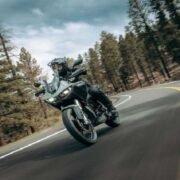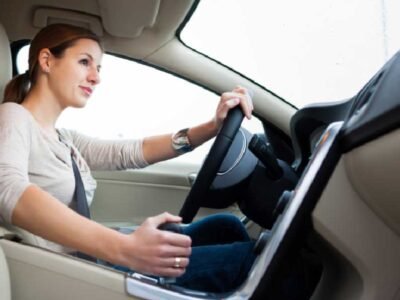Electric scooters with two wheels are a new trend. People are becoming more concerned about the environment and want to lower their carbon footprint – and an electric scooter lets them get one step closer to a greener utopia.
The best part about electric scooters is that they are fairly affordable and offer a great commute – arguably better than buses and trains.
Here’s everything you need to know about riding electric scooters in Brisbane.
A Word on Legality of E-Scooters
Electric scooters are legal in Australia – for the most part – on public property. You can bring your electric scooter on footpaths, and in some cases, on the roads as well. Just make sure that you don’t exceed the speed limit in your area – which is about 50km/h in some places.
If you want to exceed the speed and power limits that are required on public roads, then you’re better off riding them in private areas only.
Riding in bike lanes is not allowed at the time of writing.
Get a Decent Wheel Size
We recommend avoiding scooters with wheel size lesser than 10 inches in diameter. This is because smaller wheels are more susceptible to a rougher ride. You’ll also tend to get stuck in potholes. This is why you’re better off with large wheels full of air in your tyres. Note that if you plan on doing a lot of off-road riding with your electric scooter, we recommend getting fat threaded tyres and suspension.
You can get solid rubber (airless) or pneumatic (air filled).
The latter gives you a better ride and can also absorb shock with better handling. But they can get punctures and require regular maintenance. We recommend getting puncture protection fluid to increase the longevity of your tyres.
Solid tyres, on the other hand, require almost zero maintenance and are very versatile, especially in areas where there is a lot of glass, nails, or thorns. The obvious trade-off is that the ride isn’t as smooth and you will feel every bump along the terrain.
Suspension
An electric scooter can come with suspension as well – but those models come at a premium. The suspension works just like it does on regular cars and bikes. For off-road enthusiasts, we recommend looking into suspension when buying an electric scooter.
It could make or break your riding experience if you travel longer distances – and that takes all of the fun out of the equation, doesn’t it?
Suspension can be attached on either wheel. You can also attach it on both wheels for added measure.
Brakes
When it comes to riding on electric scooters, your safety comes first and brakes are an important part of the safety equation. In general, you will find three types of brakes on most electric cars.
i) Regenerative Brakes
They are low maintenance but not very effective at stopping you at speeds of above 15+ mph.
ii) Disk brakes
Disk brakes have the most stopping power but they will wear out in due time and require maintenance, just like a regular car.
iii) Foot brakes
These brakes are activated when you push down on the rear mud guard. It can be a bit tricky to use foot brakes because they require more stopping power and technique.
Pro tip: Make sure to get your electric scooter brakes serviced regularly because safety is extremely important.
Motor Power
Electric scooters come with motors that are capable of power output. These devices offer good acceleration and can work effectively on steeper terrains.
A budget electric scooter will come with 250 watts of power and can reach top speeds of up to 15 mph on electric power. These models probably won’t work at steeper terrains and will struggle to maintain higher speeds if you weigh above 80kg.
It is better to buy a model that comes with at least 400 watts to help you effortlessly travel up steep hills and tackle rougher terrain with ease.
Waterproof
Your electric scooter will get up close and personal with all outdoor elements – including water. The only problem is that most electric scooters are not designed to be waterproof. This means they will stop working on wet surfaces or when it starts to rain. Some manufacturers sneak in a fine print that states that if you get your e-scooter wet, it will void the warranty.
So if you run into any problems with the electric scooter after it gets wet, you’ll have to pay for a replacement yourself.
Cargo Carrying Capacity
In most cases, the cargo is going to be just you.
Electric scooters aren’t designed to carry a lot of weigh because only one person would be riding on them (usually). Their frame, build quality, and engine can support an adult weighing in at 100 kg. Considering that a large percentage of Australians weigh over 100 kg, these e-scooters should be able to accommodate them well.
It is worth noting that if you ride an electric scooter that isn’t designed for your weight, you could end up invalidating your warranty, and it’s just dangerous.
Range
Electric scooters can effortlessly carry you from point A to point B without you exerting any effort. The maximum travel distance quoted by manufacturers is standard numbers and the results may not be applicable to you.
For instance, the battery may be designed to carry a light person (weighing in at 60kg) on a flat surface on a full charge.
Batteries, as is their nature, will have a limited capacity (which will dwindle over time). Most electric scooters have a range of about 20 miles, while the more expensive models will cover a range of about 50 miles.
You can opt for a bigger battery, but it will make the electric scooter heavier and you’ll have to pay more.
So there you have it, we’ve covered the essentials you should know about before buying an electric scooter. You should be able to start your hunt for an electric scooter with confidence.












